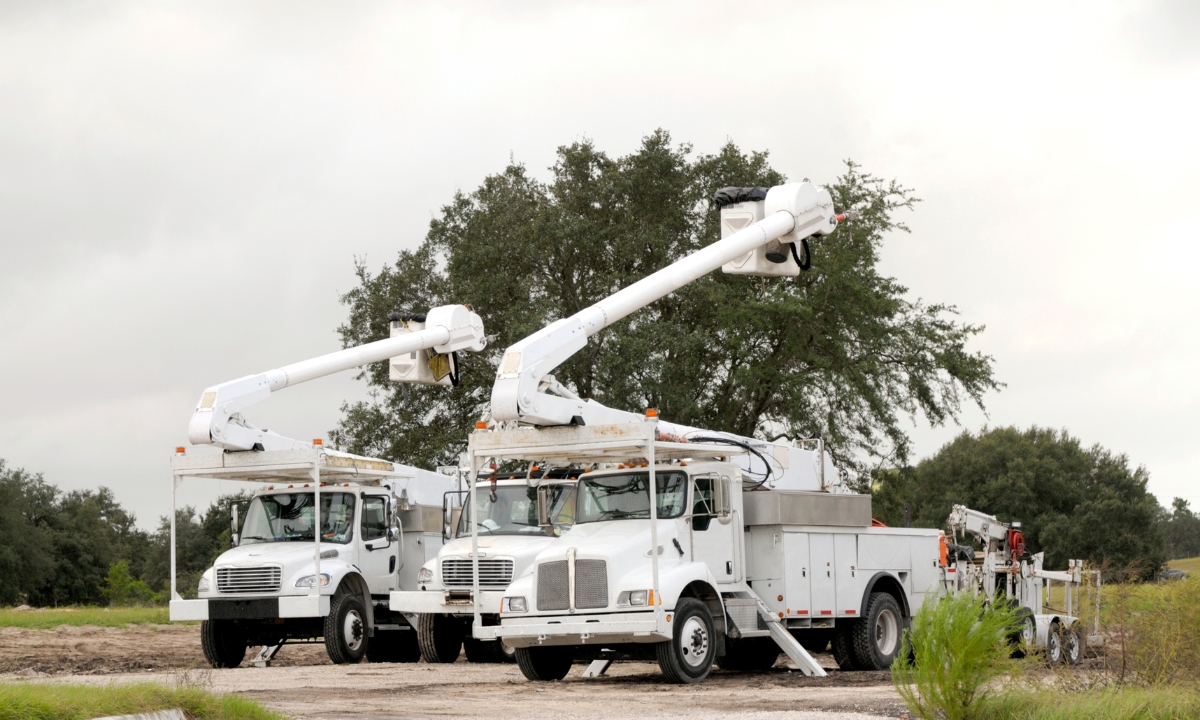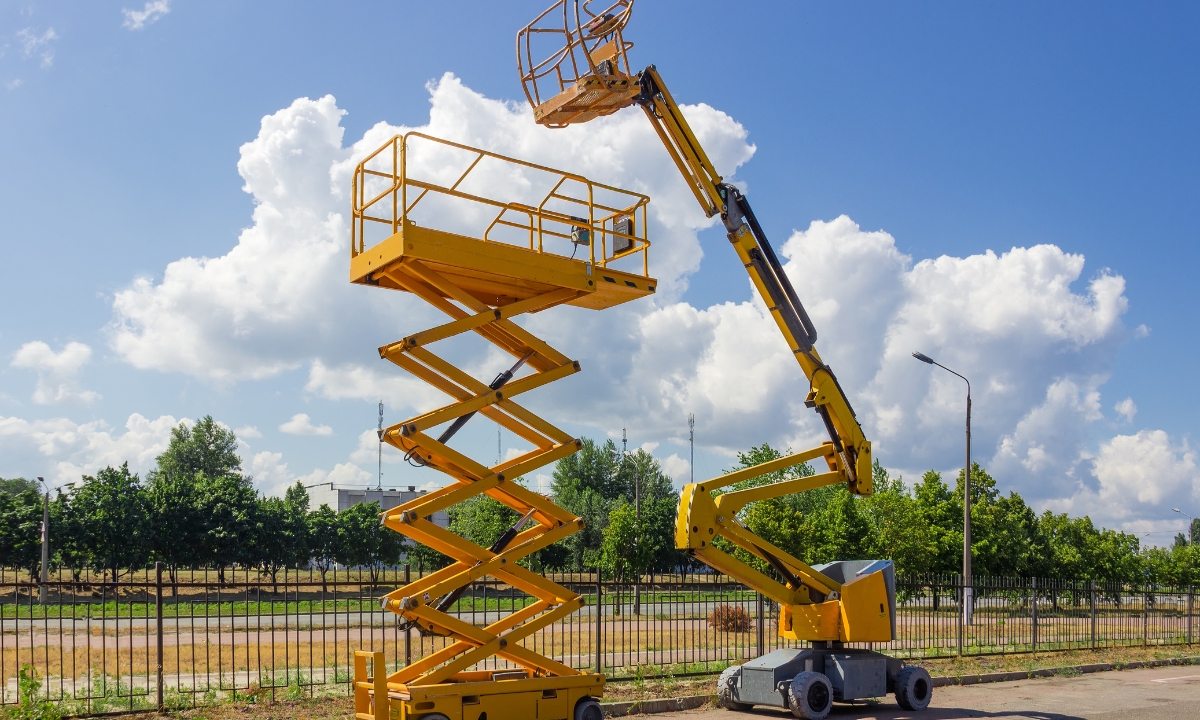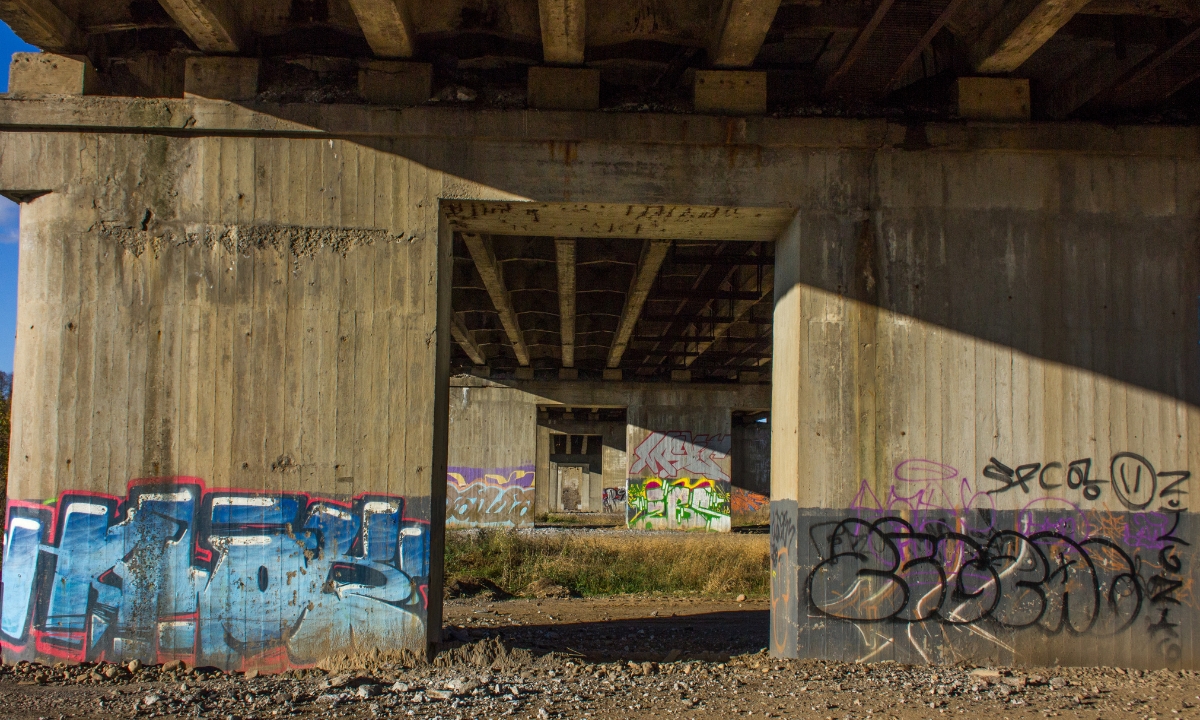Working underneath a bridge presents a unique set of challenges. Safety is paramount, and traditional methods like ladders and scaffolding can be cumbersome and risky. Thankfully, under bridge platforms offer a safer, more efficient solution for bridge inspections and maintenance tasks.
But with various types of under bridge platforms available, choosing the right one for your needs can be overwhelming. This article provides a brief overview of the most common alternatives to true under bridge platforms, highlighting their advantages and disadvantages to help you make an informed decision.

Bucket Trucks
Bucket trucks, also known as aerial work platforms or boom trucks, can be used for bridge inspections, but they have both advantages and disadvantages compared to dedicated under bridge access platforms.
Pros of Bucket Trucks:
- Versatility: Bucket trucks are multi-purpose vehicles and can be used for various tasks beyond bridge inspections, offering potentially better value for companies with diverse needs.
- Reachability: Depending on the boom length, bucket trucks can reach high areas on bridges, similar to some suspended platforms.
- Familiarity: Many companies and operators are already familiar with using bucket trucks, potentially reducing training needs.
Cons of Bucket Trucks:
- Limited Under Bridge Access: Bucket trucks are primarily designed for overhead work and may not offer the same level of maneuverability or access to the underside of bridges compared to dedicated under bridge platforms.
- Outrigger Stability: Bucket trucks rely on outriggers for stability, which can be a challenge to deploy on uneven terrain often found under bridges. This can limit their safe use in some situations.
- Safety Concerns: Working under a suspended bucket truck can be risky due to potential falling objects or equipment malfunctions. Under bridge platforms often offer a more enclosed and controlled work environment.
- Setup Time: Setting up and leveling outriggers on bucket trucks can be time-consuming compared to the quicker deployment of some under bridge platforms.
- Traffic Disruptions: Using bucket trucks on bridges might require lane closures or traffic restrictions, leading to congestion and delays. Under bridge platforms often minimize these disruptions.
While bucket trucks can be a suitable option for certain bridge inspections, particularly for reaching high points, they have limitations for accessing the bridge underside compared to dedicated under bridge platforms. For inspections that require extensive work underneath the bridge, under bridge platforms offer a safer, more efficient, and less disruptive solution.
Aerial Work Platforms
Aerial work platforms (AWPs), which include bucket trucks, are typically vehicles equipped with telescoping boom with a work platform attached at the end instead of a bucket. These can be used for bridge inspections, but like bucket trucks, they have both advantages and disadvantages compared to dedicated under bridge access platforms.
Pros of AWPs:
- Versatility: As mentioned before, AWPs are multi-purpose and can be used for various tasks beyond bridge inspections, offering potentially better value for companies with diverse needs.
- Reach: Depending on the type of AWP, some boom lifts can offer excellent reach, similar to suspended platforms, for accessing high areas on bridges.
- Familiarity: Many companies and operators are already familiar with using AWPs, potentially reducing training needs compared to specialized under bridge platforms.
Cons of AWPs:
- Limited Under Bridge Access: Most AWPs are primarily designed for overhead work and may not be suitable for accessing the bridge underside. Their maneuverability underneath the bridge can be limited compared to dedicated platforms.
- Outrigger Stability: Similar to bucket trucks, most AWPs rely on outriggers for stability. Deploying these outriggers on uneven terrain under bridges can be challenging, limiting their safe use in some situations.
- Safety Concerns: Working on an AWP can be risky due to potential falling objects or equipment malfunctions. Under bridge platforms often provide a more enclosed and controlled work environment.
- Setup Time: Setting up and leveling outriggers on AWPs can be time-consuming compared to the quicker deployment of dedicated under bridge platforms.
- Traffic Disruptions: Using AWPs on bridges might require lane closures or traffic restrictions, leading to congestion and delays. Under bridge platforms often minimize these disruptions.
While AWPs can be a suitable option for specific bridge inspection tasks, particularly for reaching high points on the bridge structure, they have limitations for accessing the bridge underside compared to dedicated under bridge platforms. For inspections requiring extensive work underneath the bridge, under bridge platforms offer a safer, more efficient, and less disruptive solution.

Scissor Lifts
Scissor lifts are a familiar sight on many construction sites. These platforms utilize interlocking scissor mechanisms to raise and lower a work platform vertically. Scissor lifts can be used in limited situations for inspection work on highway overpasses or pedestrian bridges, for example, but they generally are not the most ideal option due to several drawbacks.
While not specifically designed for under bridge work, they can be effective for certain applications.
Pros of Scissor Lifts:
- Readily Available: Often readily available for rent from equipment suppliers.
- Easy Operation: Simple controls make them user-friendly for most operators.
- Variable Height: Offer a wide range of adjustable working heights.
Cons of Scissor Lifts:
- Limited Reach: Primarily for vertical access, so horizontal movement underneath the bridge is restricted.
- Outdoor Suitability: Electric or engine-powered models may not be ideal for dusty or wet environments under bridges.
- Ground Stability: Require a level and stable base for safe operation, which may not always be available under bridges.
Recommendations When Considering Scissor Lifts
If you’re considering using a scissor lift for bridge inspections, it’s crucial to thoroughly evaluate the specific bridge structure, access points, and ground conditions. Consulting with a professional under bridge access platform rental company can help you determine the most suitable and safe equipment for your needs.
Choosing the Right Platform
Selecting the most suitable under bridge platform depends on several factors:
- Bridge type and size: Consider the bridge’s design, clearance, and weight limitations.
- Work requirements: Evaluate the tasks needing to be completed, the number of workers involved, and the necessary workspace.
- Site conditions: Assess the ground conditions under the bridge and any potential obstacles.
- Budget: Different platforms come with varying rental costs.

Looking for the Right Under Bridge Platform?
Under bridge access platforms offer the safest and most efficient way to conduct bridge inspections and maintenance tasks. By understanding the different types of platforms available and their strengths and weaknesses, you can make an informed decision to choose the one that best suits your specific needs.
Don’t hesitate to consult with our team of experts at Under Bridge Platforms. We can help you assess your project requirements and recommend the right platform to ensure a safe and successful bridge project. We offer a wide range of under bridge access equipment for rent, ensuring you have the right tool for the job. Contact us today for a free quote and let us help you get the job done right!
At Under Bridge Platforms, we’re proud to be your one-stop shop for top-quality under bridge platform rentals throughout the Western States. We offer a comprehensive selection of cutting-edge bridge access platforms, including the versatile Aspen A-30 Unit and the powerful HPT-43 Truck Mounted Platform.
Our team of experts is here to help you navigate the process of choosing the perfect platform for your specific needs. We understand the importance of getting the right equipment for the job, and we’ll work closely with you to ensure a successful project.
Ready to Streamline Your Inspections?
Contact us today to discuss your bridge access requirements and discover how our under bridge platforms can help you achieve faster, safer, and more efficient inspections.


Recent Comments